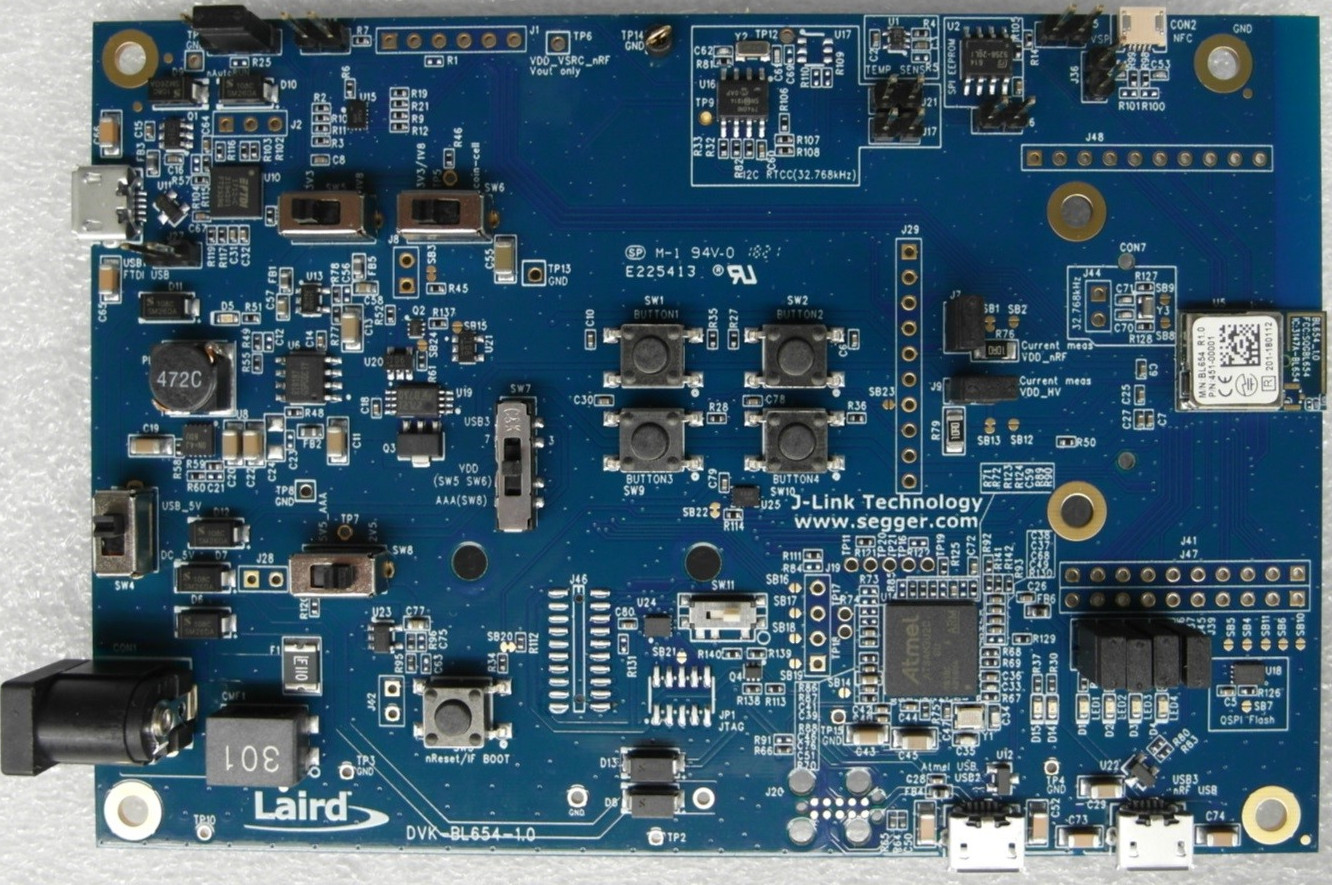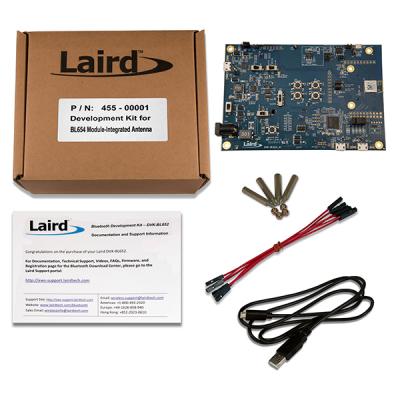BL654 DVK¶
Overview¶
The BL654 Development Kit hardware provides support for the Laird BL654 module powered by a Nordic Semiconductor nRF52840 ARM Cortex-M4F CPU.
This development kit has the following features:
- ADC
- CLOCK
- FLASH
- GPIO
- I2C
- MPU
- NVIC
- PWM
- RADIO (Bluetooth Low Energy and 802.15.4)
- RTC
- Segger RTT (RTT Console)
- SPI
- UART
- USB
- WDT
More information about the board can be found at the BL654 website [1].
Hardware¶
Supported Features¶
The BL654 DVK board configuration supports the following hardware features:
| Interface | Controller | Driver/Component |
|---|---|---|
| ADC | on-chip | adc |
| CLOCK | on-chip | clock_control |
| FLASH | on-chip | flash |
| GPIO | on-chip | gpio |
| I2C(M) | on-chip | i2c |
| MPU | on-chip | arch/arm |
| NVIC | on-chip | arch/arm |
| PWM | on-chip | pwm |
| RADIO | on-chip | Bluetooth, ieee802154 |
| RTC | on-chip | system clock |
| RTT | Segger | console |
| SPI(M/S) | on-chip | spi |
| UART | on-chip | serial |
| USB | on-chip | usb |
| WDT | on-chip | watchdog |
Other hardware features are not supported by the Zephyr kernel. See BL654 website [1] for a complete list of BL654 Development Kit board hardware features.
Programming and Debugging¶
Applications for the bl654_dvk board configuration can be
built and flashed in the usual way (see Build an Application
and Run an Application for more details); however, the standard
debugging targets are not currently available.
Flashing¶
Follow the instructions in the Nordic nRF5x Segger J-Link page to install and configure all the necessary software. Further information can be found in Flashing. Then build and flash applications as usual (see Build an Application and Run an Application for more details).
Here is an example for the Hello World application.
First, run your favorite terminal program to listen for output.
NOTE: On the BL654 DVK, the FTDI USB should be used to access the UART console.
$ minicom -D <tty_device> -b 115200
Replace <tty_device> with the port where the board nRF52 DK
can be found. For example, under Linux, /dev/ttyUSB0.
Then build and flash the application in the usual way.
# On Linux/macOS
cd $ZEPHYR_BASE/samples/hello_world
mkdir build && cd build
# On Windows
cd %ZEPHYR_BASE%\samples\hello_world
mkdir build & cd build
# Use cmake to configure a Ninja-based build system:
cmake -GNinja -DBOARD=bl654_dvk ..
# Now run ninja on the generated build system:
ninja
ninja flash
Debugging¶
Refer to the Nordic nRF5x Segger J-Link page to learn about debugging Nordic based boards with a Segger IC.
Testing Bluetooth on the BL654 DVK¶
Many of the Bluetooth examples will work on the BL654 DVK. Try them out:
Testing the LEDs and buttons on the BL654 DVK¶
There are 2 samples that allow you to test that the buttons (switches) and LEDs on the board are working properly with Zephyr:
You can build and flash the examples to make sure Zephyr is running correctly on your board. The button and LED definitions can be found in boards/arm/bl654_dvk/bl654_dvk.dts.

